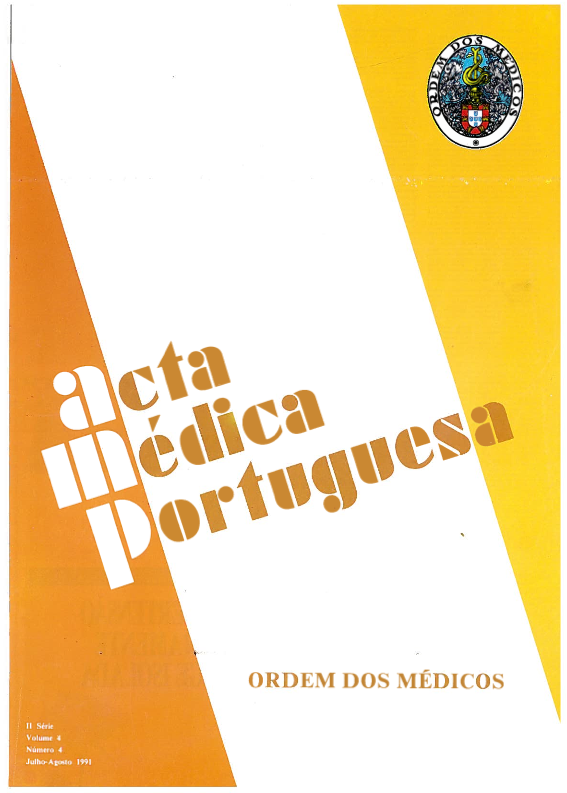Estudo prospectivo da evolução da doença ulcerosa duodenal. Análise de factores de prognóstico.
DOI:
https://doi.org/10.20344/amp.3356Resumo
We conducted a prospective clinical trial of 154 patients with duodenal ulcer disease, which was divided in two different steps: healing phase and post-healing phase. In the first phase, the patients were randomly assigned to treatment with H2 blockers (Ranitidine 300 mg or Famotidine 40 mg), in a single bedtime dose. Endoscopy was performed after 4 and 12 weeks of treatment and the healing rate was 70% and 90%. There were no significant differences between the two drugs. After 12 weeks of treatment there were sixteen patients with non-healed duodenal ulcer, considered as refractory duodenal ulcer disease, in which we started therapy with a double dose of H2 receptor antagonists or sucralfate (4 gr/day). Endoscopic follow-up after 12 weeks of this regimen revealed ulcer healing in about half of them; the cummulative healing rate in 6 months was 96.4%. Persistent lesions after 6 months of follow-up were found in 5 patients. Omeprazole 40 mg, single dose, was given and all of them were healed during the first 4 weeks of treatment. In the second phase, 137 patients healed during the first 3 months of treatment, were followed for 12 months and randomized in two groups: 61, with maintenance therapy--ranitidine 150 mg or famotidine 20 mg; 76, without treatment. In the patients without maintenance therapy, the recurrence rate was significantly higher (p less than 0.55), than in the group with maintenance therapy. In this group several parameters were evaluated--clinical, biochemical and psychosocial--to try to identify some prognostic markers of healing, relapse.(ABSTRACT TRUNCATED AT 250 WORDS)Downloads
Downloads
Como Citar
Edição
Secção
Licença
Todos os artigos publicados na AMP são de acesso aberto e cumprem os requisitos das agências de financiamento ou instituições académicas. Relativamente à utilização por terceiros a AMP rege-se pelos termos da licença Creative Commons ‘Atribuição – Uso Não-Comercial – (CC-BY-NC)’.
É da responsabilidade do autor obter permissão para reproduzir figuras, tabelas, etc., de outras publicações. Após a aceitação de um artigo, os autores serão convidados a preencher uma “Declaração de Responsabilidade Autoral e Partilha de Direitos de Autor “(http://www.actamedicaportuguesa.com/info/AMP-NormasPublicacao.pdf) e a “Declaração de Potenciais Conflitos de Interesse” (http://www.icmje.org/conflicts-of-interest) do ICMJE. Será enviado um e-mail ao autor correspondente, confirmando a receção do manuscrito.
Após a publicação, os autores ficam autorizados a disponibilizar os seus artigos em repositórios das suas instituições de origem, desde que mencionem sempre onde foram publicados e de acordo com a licença Creative Commons









